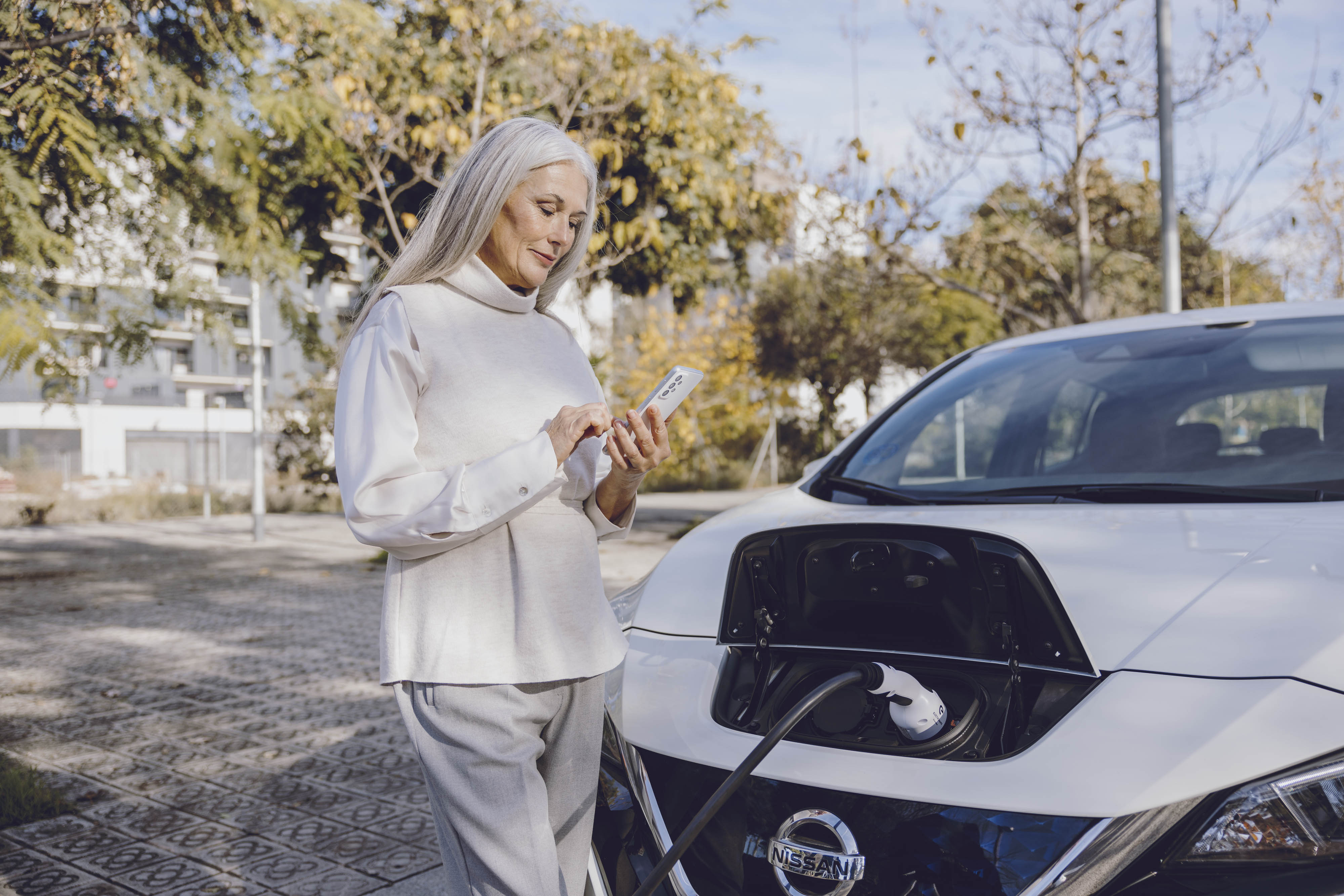The adoption of electric vehicles (EVs) is growing rapidly as more people become aware of their environmental and economic benefits. As a result, having a home charging point is becoming increasingly essential for EV owners. This guide will walk you through the benefits of having a charging point at home, the technical and legal requirements, a step-by-step installation process, and essential maintenance and safety tips to ensure your charging point functions efficiently and safely.
Benefits of Having a Charging Point at Home
1. Convenience and Accessibility
One of the primary advantages of installing a home charging point is the convenience it offers. No longer will you need to rely on public charging stations, which can be scarce, especially in rural areas. With a charging point at home, you can simply plug in your vehicle overnight and have it fully charged by morning. This accessibility reduces the need for planning charging stops during long trips and allows for more spontaneous travel. And when you need to charge outside of your home, don’t forget to use the Electromaps app to locate the best charging points around you.
2. Cost Savings
Charging your EV at home can be more cost-effective compared to using public charging stations. Many electricity providers offer special tariffs for EV owners, particularly during off-peak hours. By taking advantage of these lower rates, you can significantly reduce your vehicle’s running costs. Additionally, home charging eliminates the fees often associated with public charging networks.
3. Increased Property Value
As the demand for electric vehicles increases - find the accurate datas on our last article about EV sales in Europe - , homes with installed charging points are becoming more attractive to potential buyers. Installing a charging point is a future-proofing measure that can increase your property’s value and appeal, particularly in areas where EV adoption is high.
4. Environmental Impact
Charging your EV at home, especially if combined with renewable energy sources like solar panels, can contribute to a reduction in your carbon footprint. By using green energy to charge your vehicle, you can drive with the knowledge that your transportation is almost emission-free.
5. Personal Control Over Charging
Having a charging point at home gives you complete control over your charging schedule. You can choose when to charge your vehicle, monitor energy usage, and even set up charging routines through smart charging systems. This level of control can lead to more efficient energy usage and further cost savings.
Technical and Legal Requirements
Before installing a home charging point, it is important to understand the technical and legal requirements to ensure a safe and compliant setup.
1. Electrical System Requirements
The first technical aspect to consider is whether your home’s electrical system can support a charging point. Most EV chargers require a dedicated 240-volt circuit, similar to what is used for heavy appliances like a dryer or oven. Your home’s electrical panel must have enough capacity to handle this additional load. In some cases, an electrical service upgrade may be necessary, which involves increasing the capacity of your main breaker panel.
2. Types of Chargers
There are different types of EV chargers, primarily categorized into Level 1 and Level 2 chargers:
- Level 1 Charger: Uses a standard 120-volt outlet and provides about 2 to 5 miles of range per hour of charging. It’s slow but can be sufficient for those with short commutes or overnight charging needs.
- Level 2 Charger: Requires a 240-volt outlet and provides about 10 to 60 miles of range per hour of charging. It’s faster and is the preferred option for most EV owners.
The choice between Level 1 and Level 2 chargers depends on your daily driving habits, charging needs, and budget. - find the best chargers on Wallbox website -
3. Legal and Regulatory Considerations
Installing a home charging point involves compliance with local building codes and regulations. This may include:
- Permits: In many areas, you’ll need a permit to install an EV charger, especially if electrical upgrades are required. This ensures that the installation meets local safety standards.
- Homeowner Association (HOA) Rules: If you live in a community governed by an HOA, there may be additional guidelines or restrictions related to installing a charging point. It’s important to check with your HOA before proceeding.
- Incentives and Rebates: Some regions offer incentives or rebates for installing home charging points. It’s worth researching these options, as they can significantly reduce the installation cost.
Step-by-Step Installation

Installing a home charging point can be a straightforward process if you follow the right steps. Here’s a detailed guide to ensure a smooth installation.
1. Assess Your Charging Needs
Before installation, consider your charging habits, the type of EV you own, and your daily driving distance. This will help determine whether a Level 1 or Level 2 charger is appropriate. Additionally, think about future-proofing your installation—if you plan to upgrade your vehicle or expect longer drives, a Level 2 charger is likely the best option.
2. Choose the Right Location
The location of your charging point should be convenient and safe. Typically, this will be in a garage or a driveway. Consider the proximity to your electrical panel, as this can impact installation costs. Ensure the location is weather-protected if the charger will be installed outdoors.
3. Hire a Qualified Electrician
Once you’ve decided on the type of charger and location, hire a qualified electrician. They will assess your electrical system, determine if any upgrades are needed, and ensure the installation complies with local codes. It’s essential to choose an electrician with experience in EV charger installations to avoid potential issues.

4. Obtain Necessary Permits
Before the installation begins, you may need to obtain permits from your local building authority. Your electrician can usually assist with this process. Securing permits ensures the installation meets all safety and regulatory standards.
5. Installation Process
The installation process involves several key steps:
- Electrical Panel Upgrade (if needed): If your panel cannot handle the additional load, an upgrade will be necessary. This might involve installing a new breaker panel or increasing the main service capacity.
- Running Wiring: The electrician will run wiring from your electrical panel to the charger’s location. This may involve drilling through walls or running conduit along the exterior of your home.
- Mounting the Charger: The charger unit will be securely mounted to the wall or a pedestal. It’s important that the charger is easily accessible and the cord can reach your vehicle comfortably.
- Connecting the Charger: The final step is connecting the charger to the electrical system and ensuring everything is grounded and properly secured.
6. Testing the Charger
After installation, the electrician will test the charger to ensure it’s functioning correctly. This includes checking the voltage, ensuring the charger communicates with your vehicle, and verifying that the circuit breakers and safety features work as intended.
Maintenance and Safety

Once your home charging point is installed, maintaining it properly is crucial to ensure its longevity and safety.
1. Regular Inspections
Regular inspections of your charging point can help identify potential issues before they become serious problems. Check for any signs of wear and tear on the charger, cables, and connectors. Ensure that the charger is securely mounted and that all connections are tight.
2. Cleaning
Keep the charger and its components clean and free from dust and debris. Use a dry cloth to wipe down the charger unit, and avoid using water or harsh chemicals, as these can damage the equipment.
3. Monitor Charging Performance
Pay attention to the performance of your charger. If you notice any changes in charging speed or if the charger frequently trips the circuit breaker, it could indicate an underlying issue. In such cases, it’s best to consult a professional to assess the problem.
4. Safety Precautions
To ensure safe operation, follow these key safety tips:
- Use Dedicated Outlets: Ensure the charger is plugged into a dedicated outlet that is not shared with other appliances.
- Avoid Extension Cords: Never use an extension cord with your EV charger, as this can cause overheating and fire hazards.
- Check for Overheating: During charging, occasionally check the charger and cable for excessive heat. If any component feels unusually hot, stop charging and contact a professional.
- Surge Protection: Consider installing a surge protector to shield your charger and vehicle from power surges, which can occur during storms or grid fluctuations.
5. Professional Servicing
If you encounter any issues with your charging point, or if you suspect it’s not working correctly, it’s important to seek professional help. Don’t attempt to repair the charger yourself, as this can be dangerous and may void the warranty.
Conclusion
Installing a home charging point is a significant step toward making your electric vehicle ownership more convenient, cost-effective, and environmentally friendly. By understanding the benefits, technical requirements, and installation process, you can ensure a smooth and safe setup. Regular maintenance and safety checks will keep your charging point in optimal condition, providing you with reliable service for years to come.
Investing in a home charging point is not just a convenience but a way to enhance the overall experience of owning an electric vehicle. With the right setup, you can enjoy the benefits of faster, cheaper, and greener charging right from the comfort of your home.









.png)
%20(1).png)




.png)


